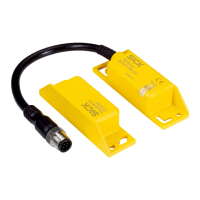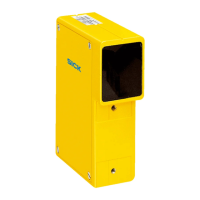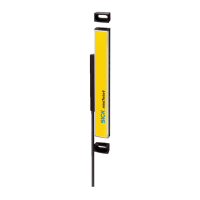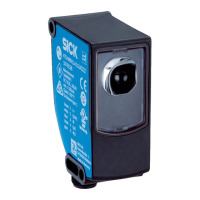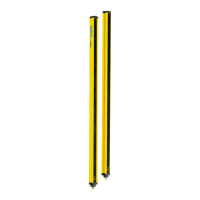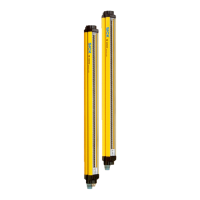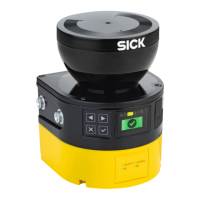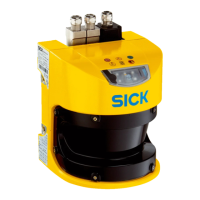Remedial measures:
•
Mount
ing of deflector plates to protect the undetected areas
•
Mount the safety laser scanner in the machine or vehicle’s paneling
Near range
In close proximity (50 mm wide area in front of the optics cover), the detection capabil‐
ity of the safety laser scanner may be restricted. If required, this area must be secured
using an undercut or frame, for example.
4.3.3 Contour as Reference monitoring
Vertical operation
N
ational and international standards require or recommend that a reference contour is
monitored, if the angle between access direction and scan plane exceeds 30°. With the
reference contour field, the safety laser scanner monitors the distance to a contour of
the environment (e.g. a wall) in order to detect inadvertent adjustment or manipulation.
Configuring the reference contour field during vertical operation
•
In many cases, it makes sense to use the floor and lateral vertical passage bound‐
aries (e.g. door frames) as a reference contour.
•
The reference contour field has an adjustable tolerance band. If the safety laser
scanner does not detect the reference contour within the tolerance band, all
safety outputs switch to the OFF state. In the Safety Designer, you can define the
tolerance band around the reference contour in both directions (near and far).
°
For high availability, setting both the positive tolerance band (far) and the
negative tolerance band (near) to the TZ value is recommended. (TZ = toler‐
ance range of the safety laser scanner, see "Data sheet", page 111.)
°
The tolerance band must not be too wide. The reference contour field must
detect a deviation from the reference contour before access to the hazardous
point occurs next to the protective field. Deviations may occur due to changes
in position or orientation.
•
You can define a number of reference contours in the reference contour field and
so monitor various areas in the environment.
Protective field and reference contour field for hazardous point protection
The protective field must be larger than the protected opening. The required overrun (o)
is calculated using the following formula:
o ≥ (2 × TZ) – d
where:
•
o = overrun of the protective field over the opening
•
TZ = tolerance range of the safety laser scanner, see "Data sheet", page 111
•
d = set resolution
4 P
ROJECT PLANNING
20
O P E R A T I N G I N S T R U C T I O N S | nanoScan3 I/O 8024596/15VP/2019-11-15 | SICK
Subject to change without notice

